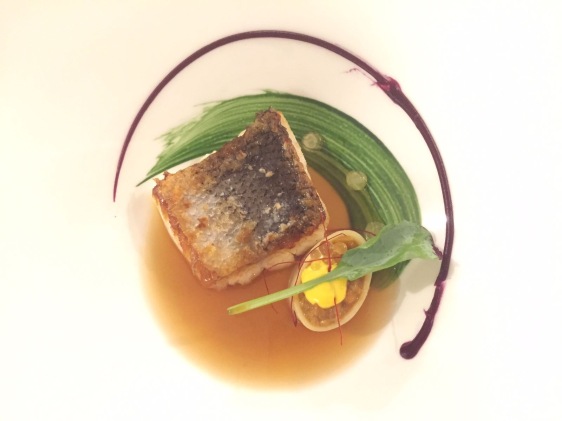In a rare quiet corner of San Sebastian’s Old Town, away from the crowded pintxo bars and below the towering Mount Urgull sits Kokotxa. Two months before my trip to San Sebastian I decided it would be the perfect opportunity to visit my first Michelin-starred restaurant. San Sebastian, after all, boasts the second-highest Michelin stars per capita, behind only Kyoto in Japan. It is the epicentre of la nueva cocina, Spain’s answer to France’s nouvelle cuisine, blending traditional food and produce with modern and experimental techniques.
Kokotxa, Basque for cheeks, the tastiest part of any animal, is a small, unpretentious restaurant. Decorations are modest, dress code is casual; there is barely room for 30 people. A group of boisterous Australian and American cruisers occupied over half the dining room. The restaurant was fully booked two months in advance, and could only accommodate us at 9.30pm, normal by Spanish standards of course.
As expected of restaurants of this sort, the staff were friendly and knowledgeable on the day’s menu, options including a six-course “market menu” and nine-course “tasting menu” alongside the à la carte menu. We opted for the former, created from local, seasonal produce. The sommelier recommended an excellent Rioja at a very reasonable €5 a glass.
With so many eateries lining the Old Town, serving an implausibly wide array of pintxos and some excellent steak and seafood on the cheap, the chefs had their work cut out to impress me. After lunching at Bar Nestor, which serves only five items, all staunchly simple, steak, peppers, tortillas, for example, dinner was the polar opposite. Techniques brought to the masses only on Masterchef were abundant, with ample foam, froth and edible earth to please even John Torode. The food, immaculately presented, was almost all excellent.
First came the appetiser, a brownish, beige sauce accompanied by breadsticks. My unsophisticated pallet detected a creamy, cheesy concoction; it turned out to be mayonnaise and mustard, but it whet our appetites sufficiently. The starter, a tomato, red pepper and feta gazpacho was refreshing, mixing the sweetness of the peppers with the tomatoes’ acidity and the tang of the feta perfectly. A dainty, slightly lost, shrimp blini sat beside the soup.
Mains were focused on seasonal and fresh seafood. The highlight came first, an asparagus, scallop, and Jerusalem artichoke salad on an edible earth of chocolate, squid ink, cheese and almonds. It resembled art rather than food, and wouldn’t look out of place on show at the Guggenheim in nearby Bilbao.

Two fish dishes were expertly executed. Cod kokotxa, the restaurant living up to its name, were gelatinous, melt-in-the-mouth pieces of goodness. The waiter insisted kokotxa comes from under the chin, though Google maintains it’s the cheek. Either way, it was a delight, presented on parsley sauce with a mousse made from the cooking juices and olive oil.
Hake in a dashi of dried tuna, seaweed and shiitake was equally tender and tasty, despite combining some of my least favourite flavours, and it was accompanied by a crab and saffron rigatoni.


The only disappointment was a prawn on a bed of beetroot rice and seaweed, which we greedily and somewhat unnecessarily added to the market menu for a seventh course. The prawn wasn’t sweet and tender like others I’ve had, and the beetroot rice lacked flavour. But slow-cooked Iberian pork with a macadamia mousse restored my faith.
The dessert, a sponge cake with things that sound gross, cheese mousse and goat yoghurt ice cream for example, was surprisingly good.
At €75 a head, including drinks, Kokotxa isn’t cheap, but neither is it outrageous compared with some more pretentious rivals. It’s earned its Michelin star for a reason. Local, fresh produce is combined with modern techniques to create intriguing and inspired dishes. It isn’t afraid to look outside Spain for influences, but stays true to its roots.
